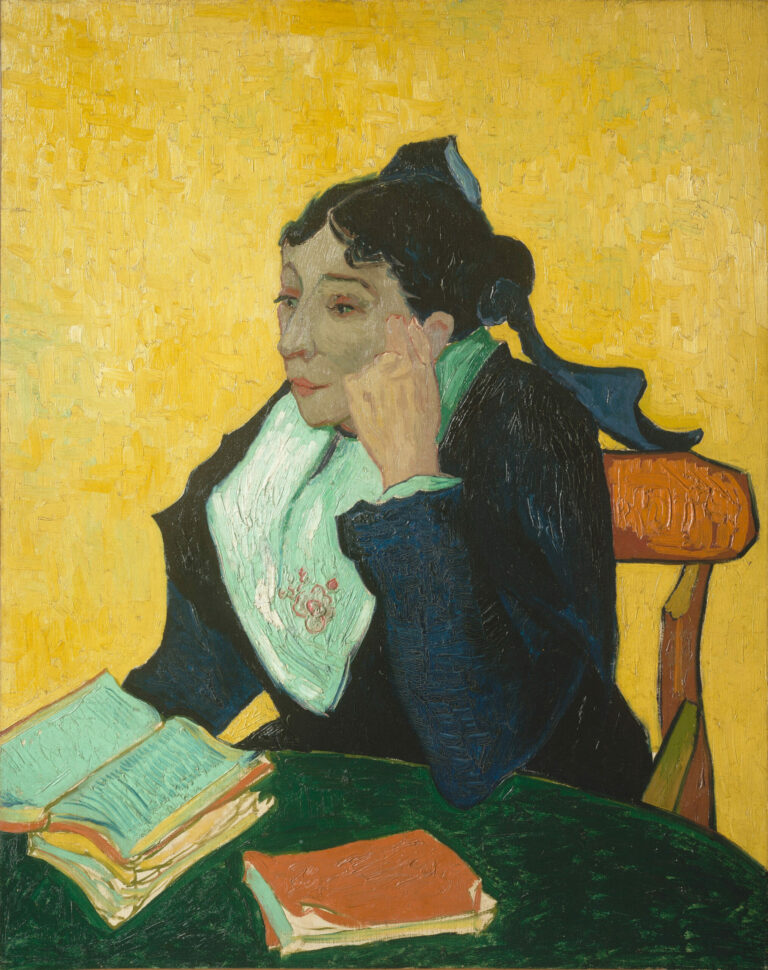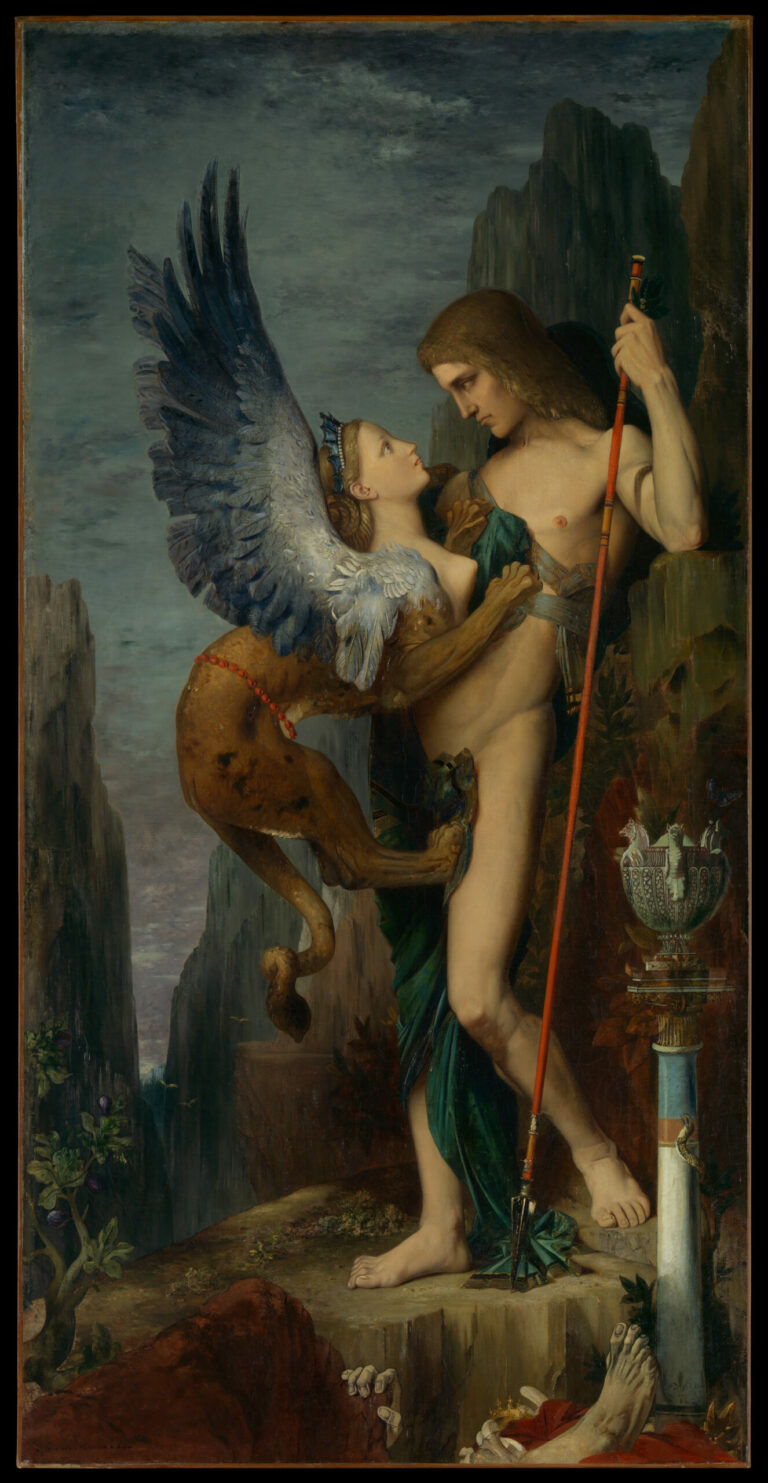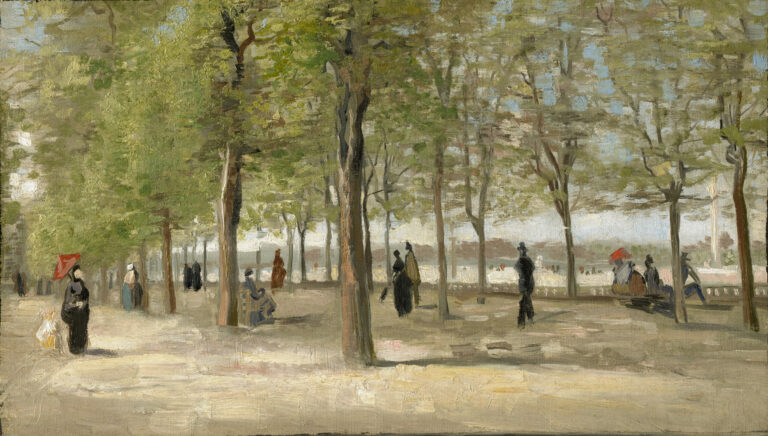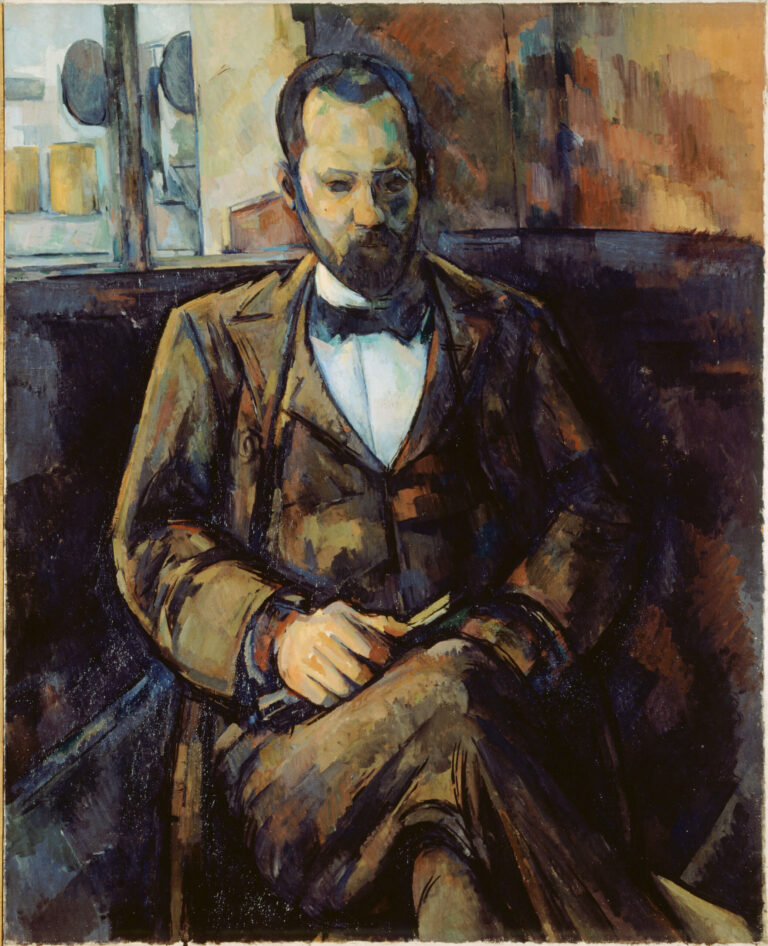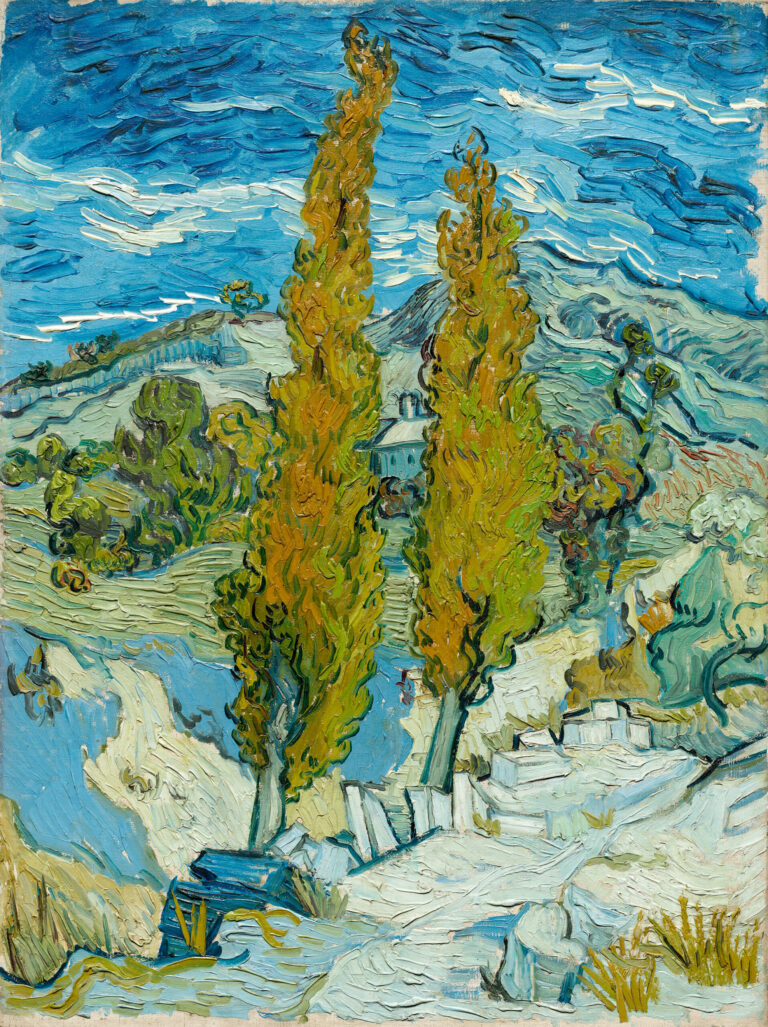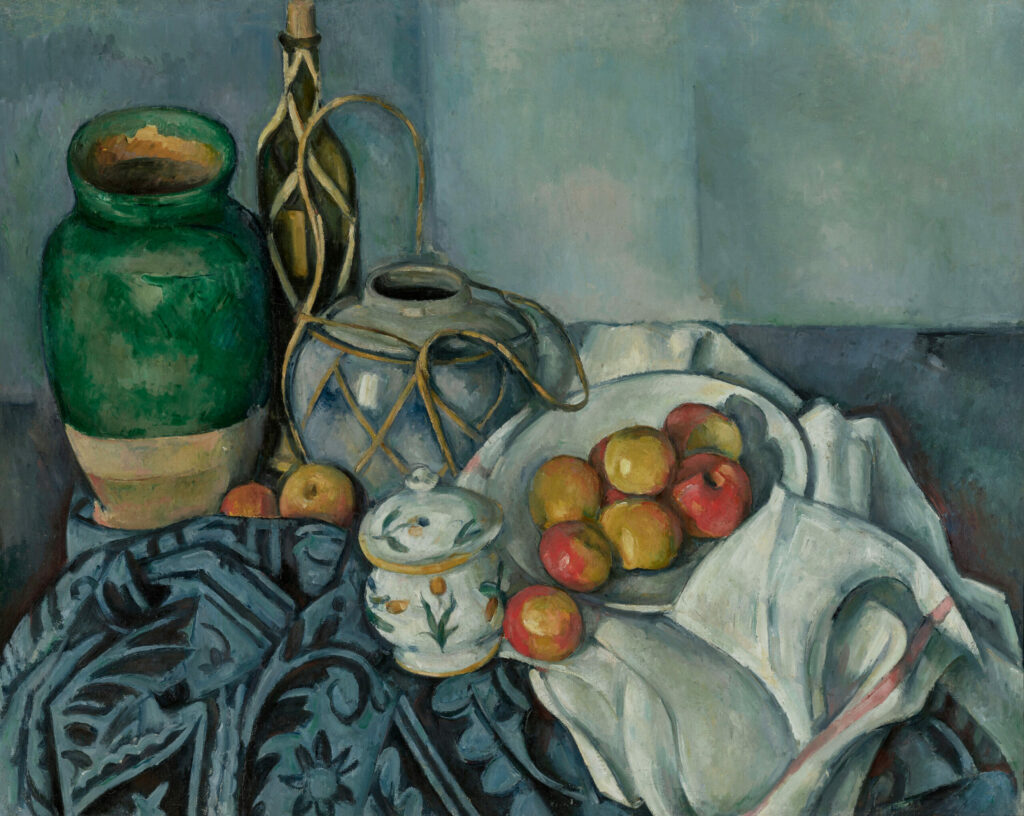
Aix-en-Provence, 1893. In his studio, Paul Cézanne once again arranges the green vase, the blue ginger jar, and a few apples on a white cloth. These familiar objects—he paints them tirelessly.
A Masterfully Orchestrated Composition
Notice how everything holds together in this still life. The green vase stands to the left, its beige base anchoring the composition. Behind it, a bottle wrapped in wicker straps rises vertically. The blue jar, also encircled with woven bindings, occupies the center. The red and yellow apples scatter: some rest in a dish, others on the fabric. A sugar bowl with vegetal motifs completes the ensemble.
Cézanne works through juxtaposed touches of color. The contours are never sharp. A black arabesque escapes from the blue cloth to capture an apple. The straps of the ginger jar blend with those of the bottle. This technique creates visual connections between all the elements. The space seems to vibrate, the objects breathe.
The Productive Obsession of an Innovator
For three decades, Cézanne paints the same objects. His interest lies not in the vase or the fruits themselves, but in what they allow him to explore: form, color, light, space. Each painting becomes a laboratory where he tests new pictorial solutions. He builds his volumes through color rather than through traditional drawing. This revolutionary approach heralds Cubism.
Cézanne, the Father of Modern Art
Paul Cézanne abandons his banking career for painting despite paternal opposition. Long misunderstood, he works in solitude in Provence. His method profoundly influences Picasso, Braque, and Matisse, who consider him their precursor.
💭 How do these ordinary apples contain the seeds of all modern painting?
About This Work
- Still Life with Apples, Paul Cézanne, 1893-1894
- Oil on canvas, 65.4 × 81.6 cm
- The J. Paul Getty Museum, Los Angeles
- https://www.getty.edu/art/collection/object/103QT5

